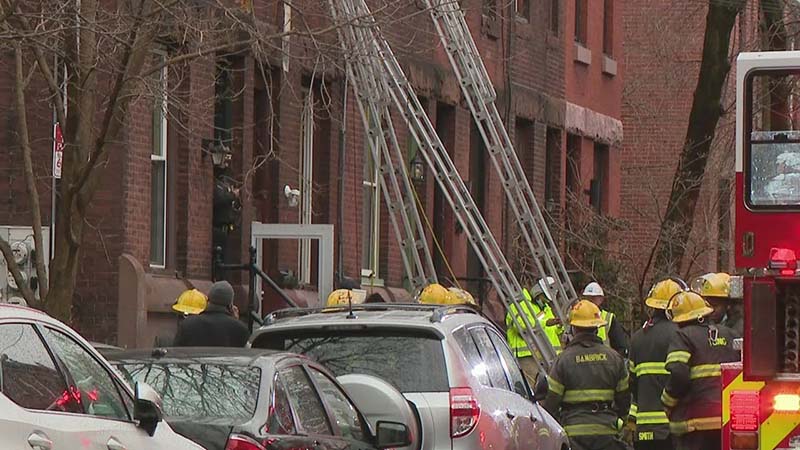The Philadelphia Housing Authority (PHA) has recently become the subject of many news articles and social media posts following the horrific tragedy in which fire at a PHA property in the Fairmount section of Philadelphia took the lives of twelve people, including nine children.
Per a January 11, 2022 article from Fox29, Philadelphia Fire Commissioner Adam Thiel indicated that investigators believed the fire started when a 5-year old ignited a Christmas tree with a lighter:
Fire investigators on Tuesday said a Christmas tree ignited by a lighter caused a deadly rowhome fire in Fairmount last week that killed 12 people, including nine children.
“We believe with certainty – so 99 to 100% confidence – that the first item ignited in this blaze was a Christmas tree,” Philadelphia Fire Commissioner Adam Thiel said. “We believe with near certainty, based on the evidence, the ignition source for this tree was a lighter that was located nearby.
The full article can be found at the following link: Fox29 Article
However, in the aftermath of this tragedy, many of the conversations have focused more on the actions or inactions of the PHA leading up to the fire than the ignition source of the fire. More specifically, conversations have focused on whether the PHA should have taken action to address the following:
- Escape routes
- Smoke detectors
- Fire extinguishers
- Fire suppression systems
- Maximum occupancy
There have been many articles written about these topics. The following are just a few examples:
- PHA owns thousands of other rowhomes like the one that burned in Fairmount – Link to BillyPenn.com Article
- PHA knew for years about overcrowding in homes of Fairmount fire victims but didn’t move them Link to Philly.com Article
We fully anticipate that litigation will be filed on behalf of the victims of the fire, although we are not aware of any litigation filed yet. Many assume that the PHA will be a target defendant in any lawsuit. However, what many people fail to realize is that there are significant obstacles when it comes to bringing a claim against the PHA. In addition, there are limits on how much can be recovered from the PHA.
Our firm is frequently contacted regarding potential claims against the PHA for injuries sustained in or around PHA houses. As such, we are intimately familiar with the many legal issues that arise in claims against the PHA. In short, the PHA is a governmental entity and therefore benefits from several defenses that a private company does not have. In addition, there is a maximum amount that can be recovered from the PHA.
In Pennsylvania, there are two separate Acts that may provide certain immunities and protections to a governmental entity: The Sovereign Immunity Act and the Political Subdivision Tort Claims Act. In short, the Sovereign Immunity Act applies to claims brought against a Commonwealth agency or employee, and the Political Subdivision Tort Claims Act applies to claims brought against a municipal or local agency or employee.
Because the PHA is a Philadelphia-specific housing authority, it is a common misconception that the PHA is a municipal or local agency or employee and therefore the Political Subdivision Tort Claims Act applies. However, there is case law in Pennsylvania that dictates that the PHA is actually a Commonwealth agency. More specifically, the Commonwealth Court of Pennsylvania in Williams v. Philadelphia Hous. Auth., 873 A.2d 81, 86 (Pa. Commw. Ct. 2005) specifically held that a claim against the PHA is covered by the Sovereign Immunity Act. A copy of the opinion can be found Here.
The intent of the Sovereign Immunity Act is very clear—to shield the government from liability. As such, with a claim against the PHA, it is necessary to establish that the claim fits into one of the ten categories that permits an injured party to bring a claim for damages as outlined by 42 Pa. Stat. and Cons. Stat. Ann. § 8522 (West):
- Vehicle liability.
- Medical-professional liability.
- Care, custody, or control of personal property.
- Commonwealth real estate, highways, and sidewalks.
- Potholes and other dangerous conditions.
- Care, custody, or control of animals.
- Liquor store sales.
- National Guard activities.
- Toxoids and vaccines.
- Sexual abuse
If it cannot be established that your claim was caused by one of these ten categories, it will likely be barred.
Another protection afforded by the Sovereign Immunity Act is a cap on damages. More specifically, 42 Pa. Stat. and Cons. Stat. Ann. § 8528 (West) Provides that “damages arising from the same cause of action or transaction or occurrence or series of causes of action or transactions or occurrences shall not exceed $250,000 in favor of any plaintiff or $1,000,000 in the aggregate”. In other words, an injured victim’s damages will be capped at $250,000 regardless of how significant his or her injuries are. However, in a wrongful death and survival action, there may be an opportunity to recover $500,000 depending on the circumstances of the case.
In short, the Sovereign Immunity Act creates significant hurdles to bringing claims against Commonwealth entities, such as the PHA. In addition, there are various procedural requirements, most importantly that anyone “who is about to commence any civil action or proceeding within this Commonwealth or elsewhere against a government unit” must submit a statement in writing within six months of the date of injury setting forth the following:
(i) The name and residence address of the person to whom the cause of action has accrued.
(ii) The name and residence address of the person injured.
(iii) The date and hour of the accident.
(iv) The approximate location where the accident occurred.
(v) The name and residence or office address of any attending physician.
As such, it is imperative that you retain an attorney who has significant experience navigating the nuances of the Sovereign Immunity Act. The attorneys at DiSandro and Malloy, P.C. have the experience necessary to handle these often difficult cases. If you or a loved one has been injured by the negligence of a governmental entity, please contact us today for a free consultation.



